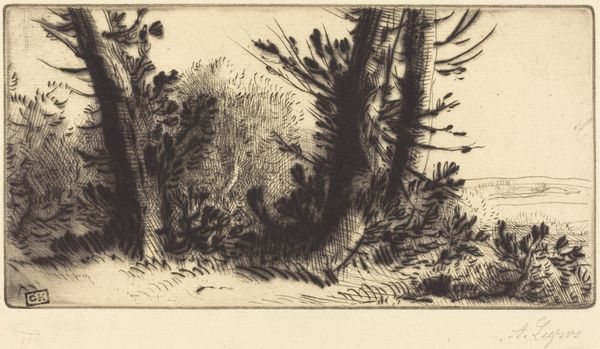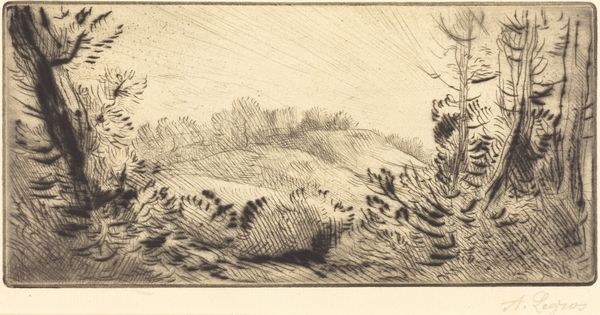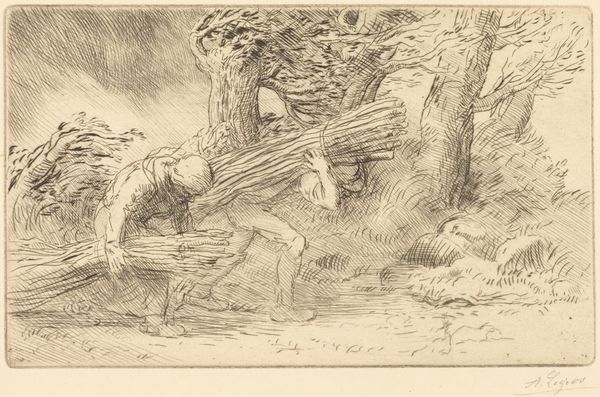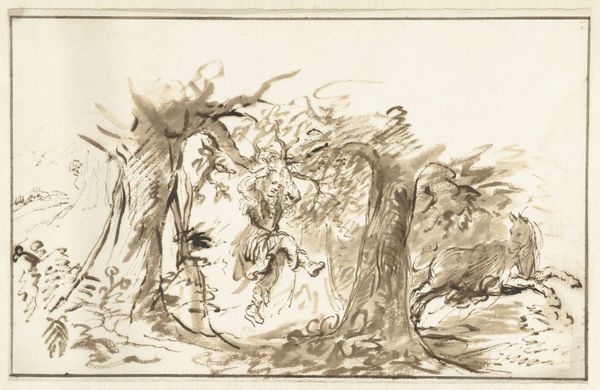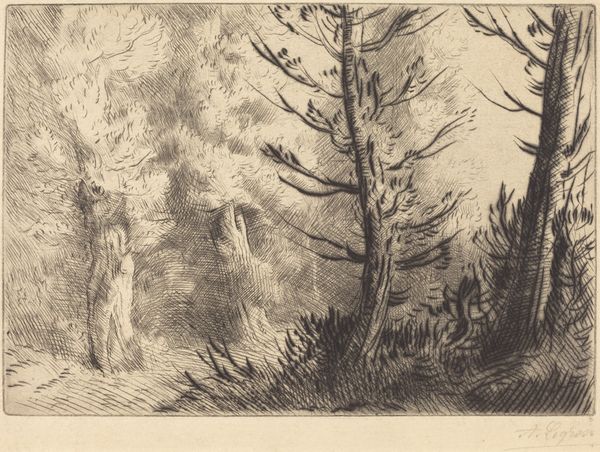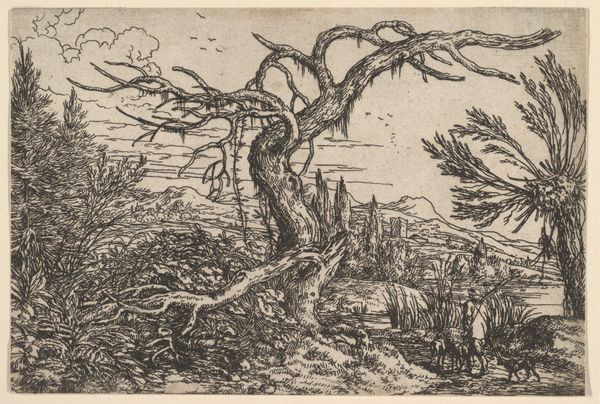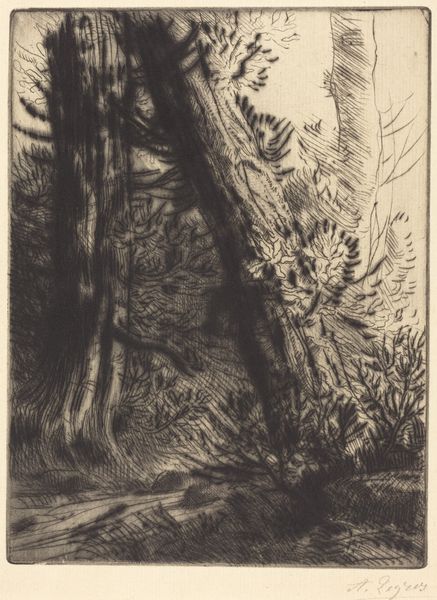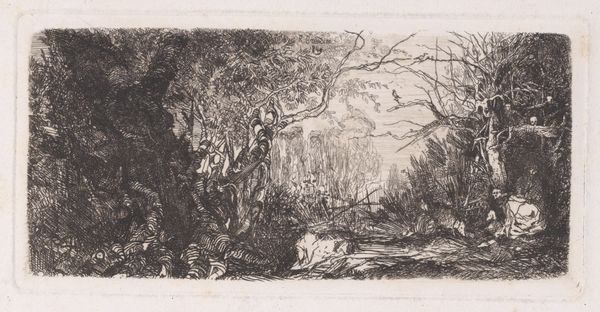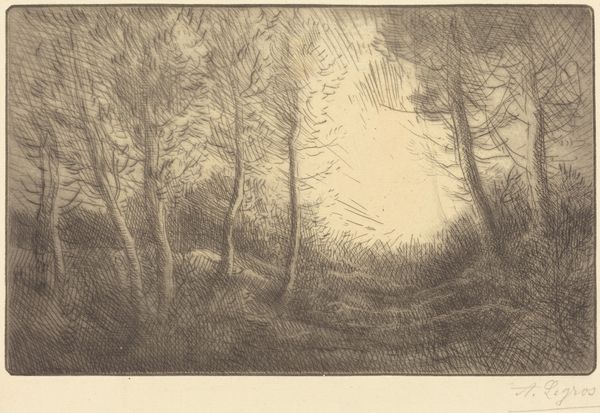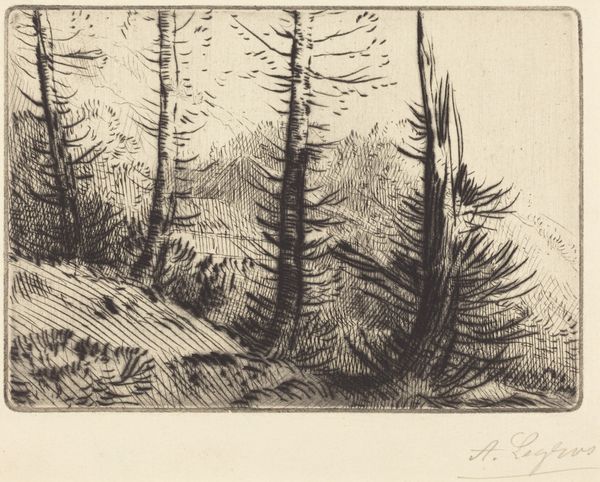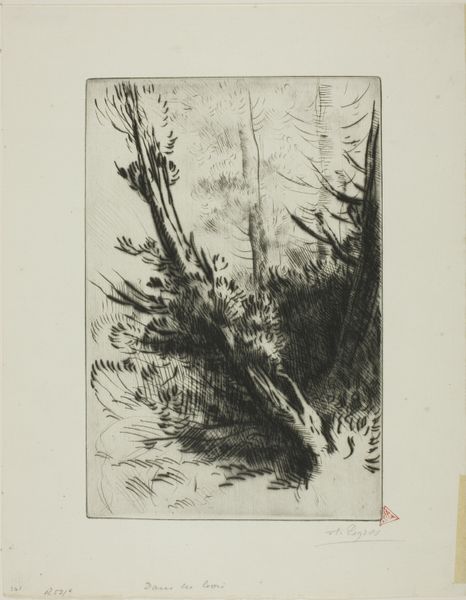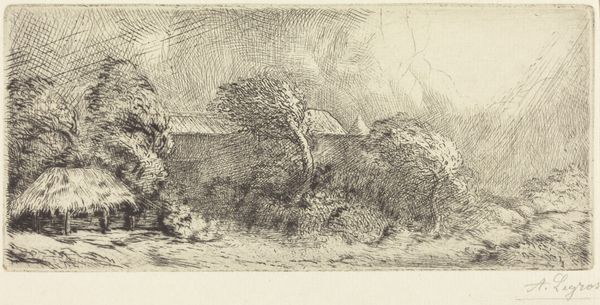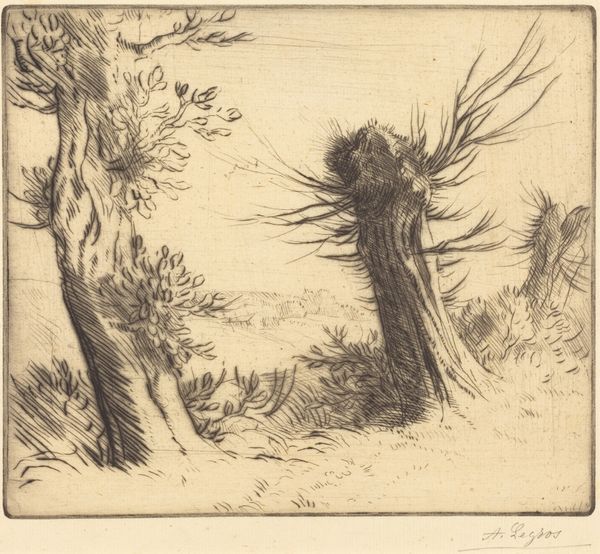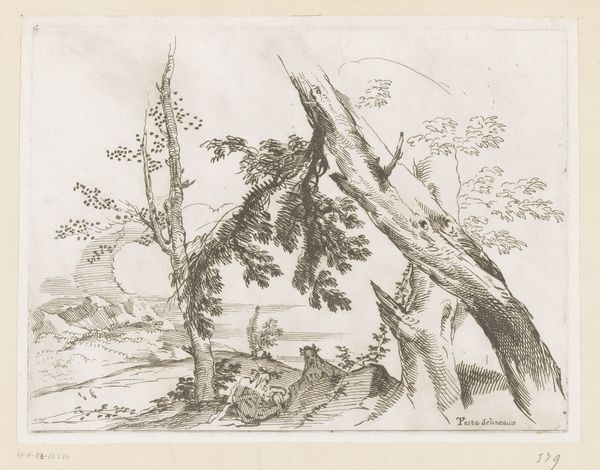
print, etching
# print
#
etching
#
landscape
#
line
#
realism
Copyright: National Gallery of Art: CC0 1.0
Editor: This is "Corner of a Path," or "Au coin d'un chemin," an etching by Alphonse Legros. The stark contrast of the dark foliage against the pale sky really gives it a sense of drama. What do you see in this piece? Curator: What strikes me is how this seemingly simple landscape engages with the broader social context of 19th-century France. Landscapes weren't just pretty pictures; they were statements about man's relationship to nature, and by extension, to society. Consider the Realist movement and its focus on everyday life, how does Legros fit or break with those ideals? Editor: So, you’re saying this is more than just a picturesque scene? How so? Curator: Absolutely. Notice the strategic cropping, focusing on this "corner." This evokes the concept of boundaries. Is Legros making a commentary on land ownership, urbanization, or the encroachment of industry on the natural world? Also, given the rise of printmaking during this period and its accessibility to a wider audience, how did works like this democratize art consumption and potentially shape public perception of the environment? Editor: I never thought about it like that. So the *availability* of the print shapes the understanding of what it represents? Curator: Precisely. The image itself is inseparable from the means of its production and dissemination. Also, given Legros's position within the art world—his teaching role in England, for example— how might that transatlantic context further inform our understanding of this very French landscape? Editor: Wow, you’ve given me so much to think about! I am just starting to realize how interwoven everything is, socially and politically, to a single piece of artwork. Curator: And it all comes down to considering the public role of art, it is not just aesthetics but rather an important part of our socio-cultural fabric.
Comments
No comments
Be the first to comment and join the conversation on the ultimate creative platform.
